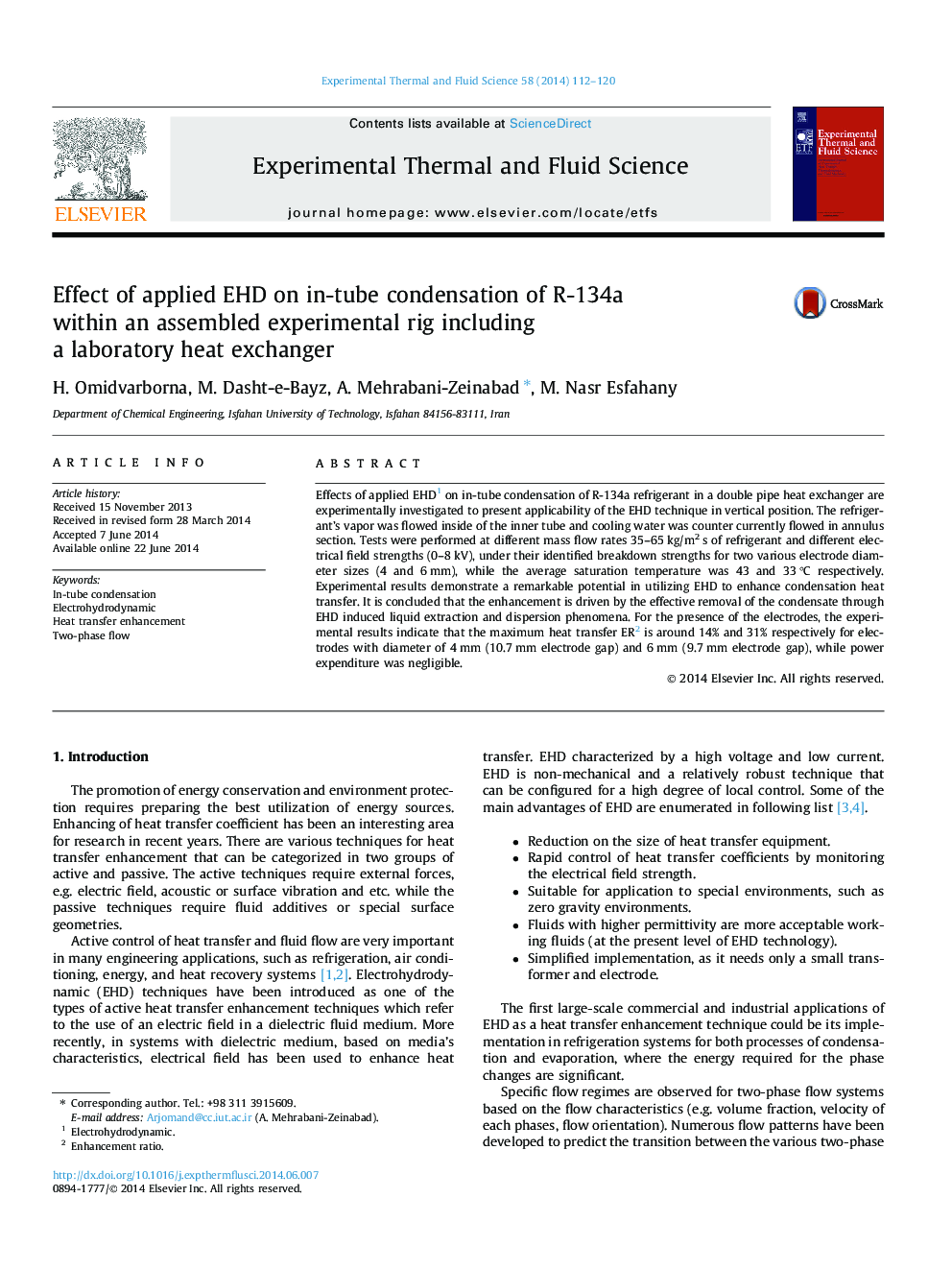| کد مقاله | کد نشریه | سال انتشار | مقاله انگلیسی | نسخه تمام متن |
|---|---|---|---|---|
| 651432 | 1457418 | 2014 | 9 صفحه PDF | دانلود رایگان |

• Electrohydrodynamic improve condensation heat transfer in vertical position.
• The heat transfer coefficient increases due to liquid extraction phenomenon.
• Heat transfer increases with increasing inlet quality in vertical orientation heat exchanger.
• Compared to 4 mm, 6 mm electrode had higher heat transfer rate at the same mass flux.
Effects of applied EHD1 on in-tube condensation of R-134a refrigerant in a double pipe heat exchanger are experimentally investigated to present applicability of the EHD technique in vertical position. The refrigerant’s vapor was flowed inside of the inner tube and cooling water was counter currently flowed in annulus section. Tests were performed at different mass flow rates 35–65 kg/m2 s of refrigerant and different electrical field strengths (0–8 kV), under their identified breakdown strengths for two various electrode diameter sizes (4 and 6 mm), while the average saturation temperature was 43 and 33 °C respectively. Experimental results demonstrate a remarkable potential in utilizing EHD to enhance condensation heat transfer. It is concluded that the enhancement is driven by the effective removal of the condensate through EHD induced liquid extraction and dispersion phenomena. For the presence of the electrodes, the experimental results indicate that the maximum heat transfer ER2 is around 14% and 31% respectively for electrodes with diameter of 4 mm (10.7 mm electrode gap) and 6 mm (9.7 mm electrode gap), while power expenditure was negligible.
Journal: Experimental Thermal and Fluid Science - Volume 58, October 2014, Pages 112–120